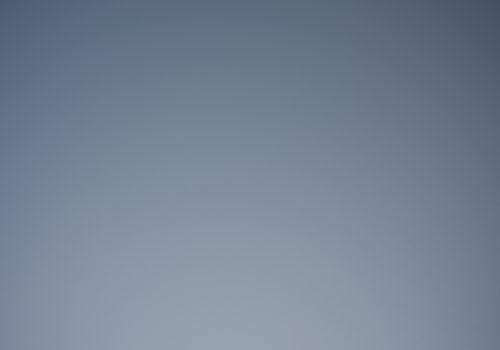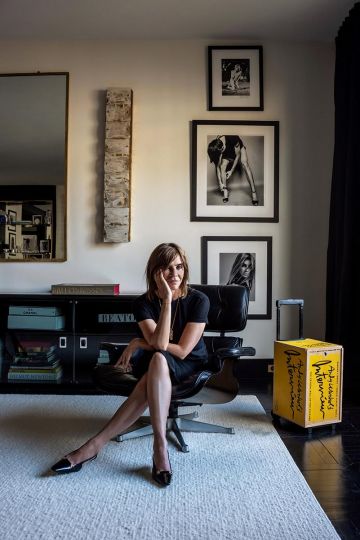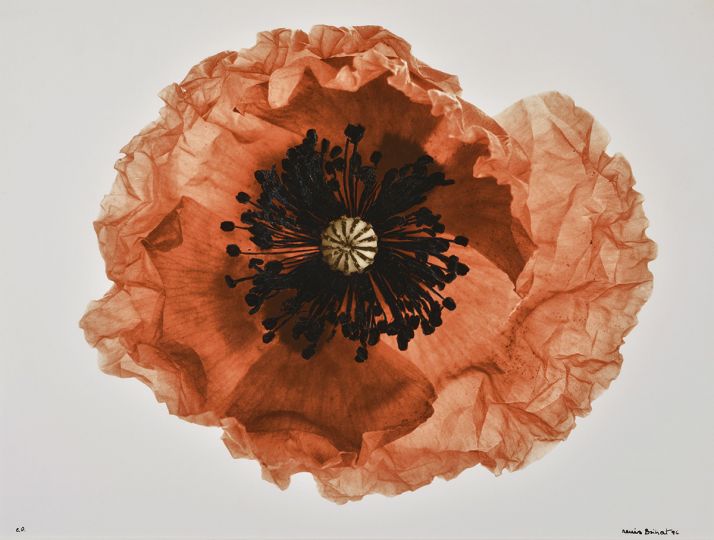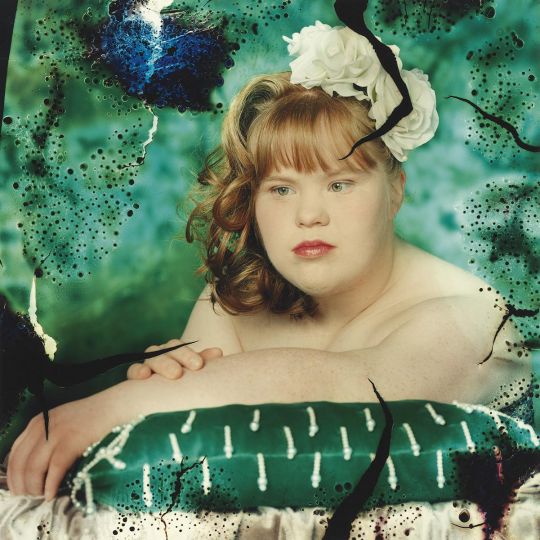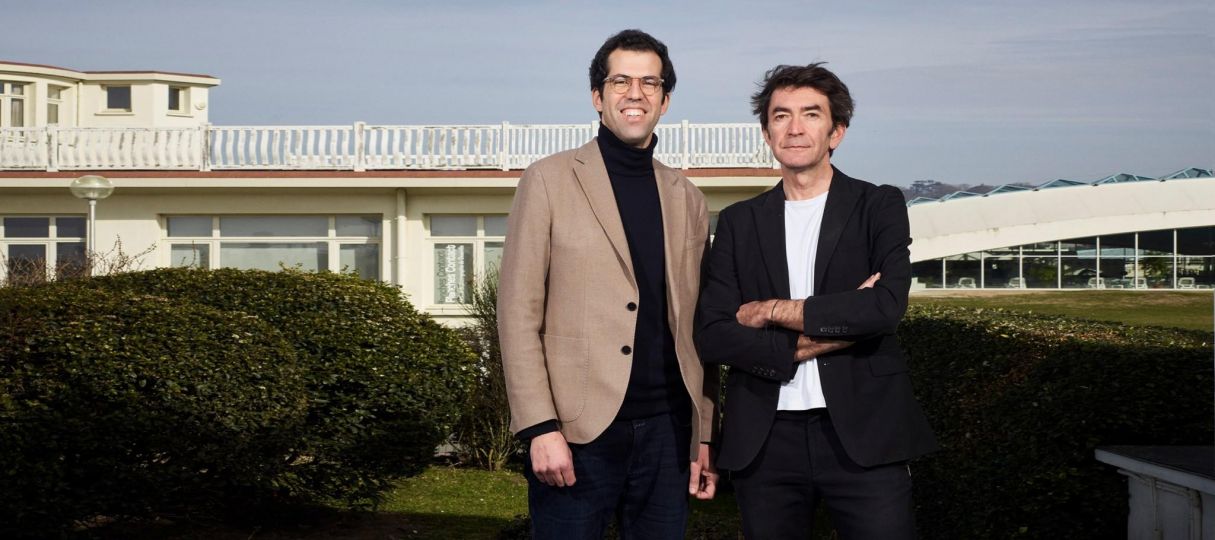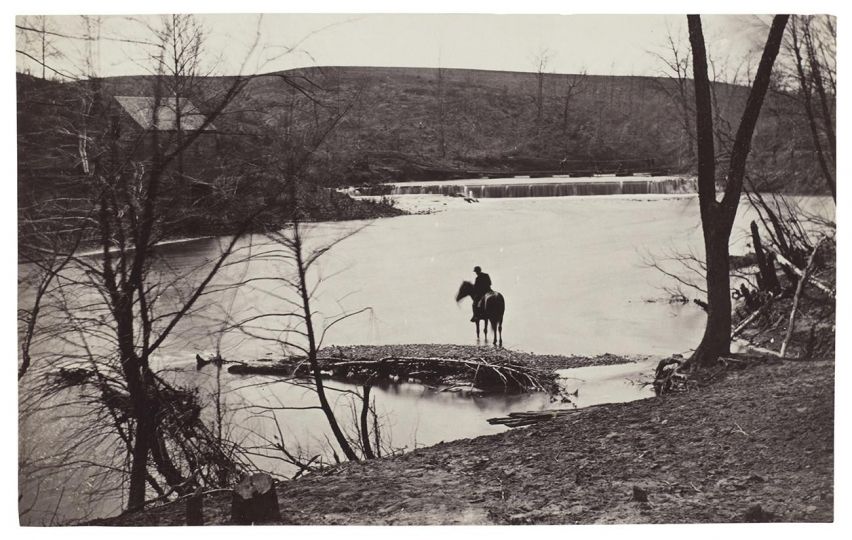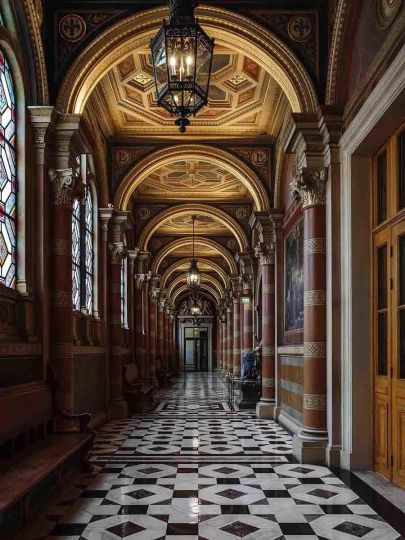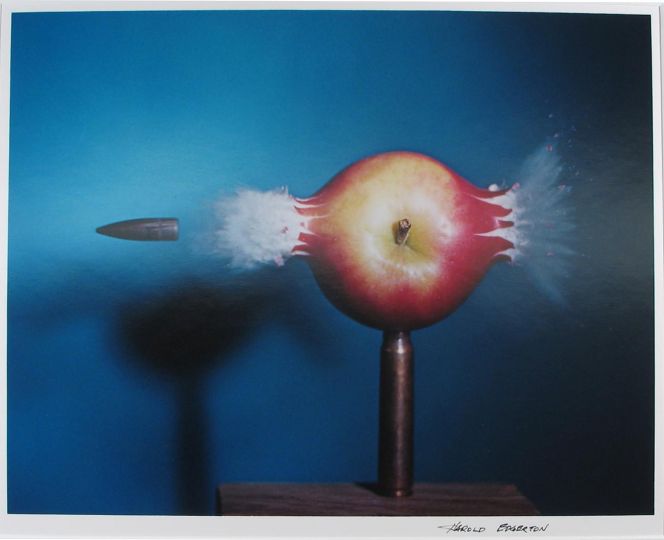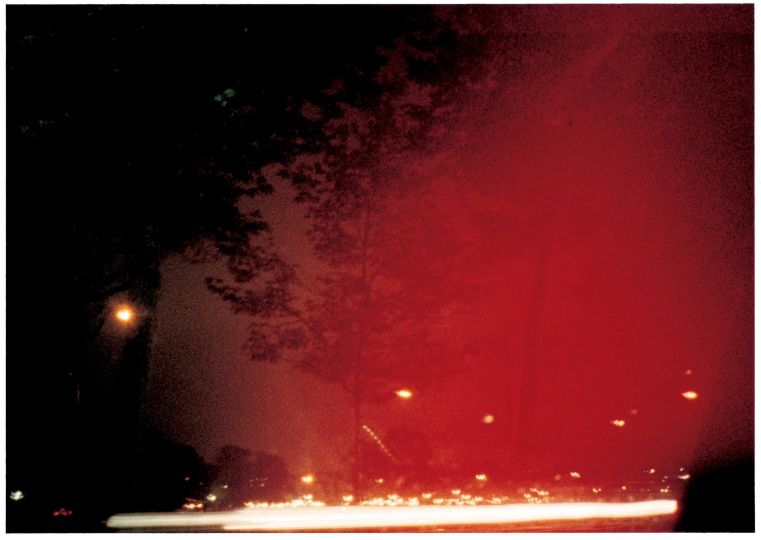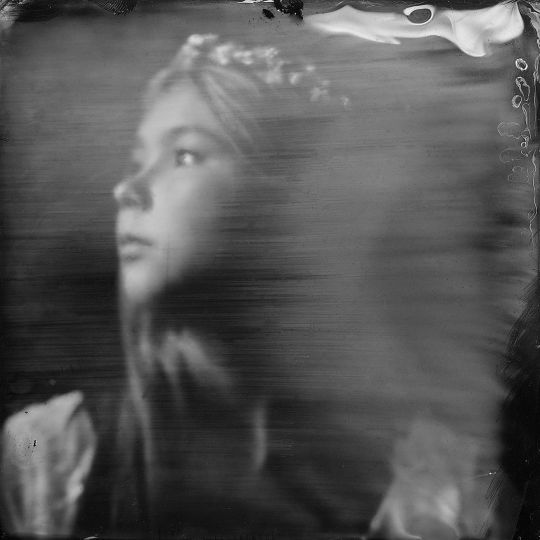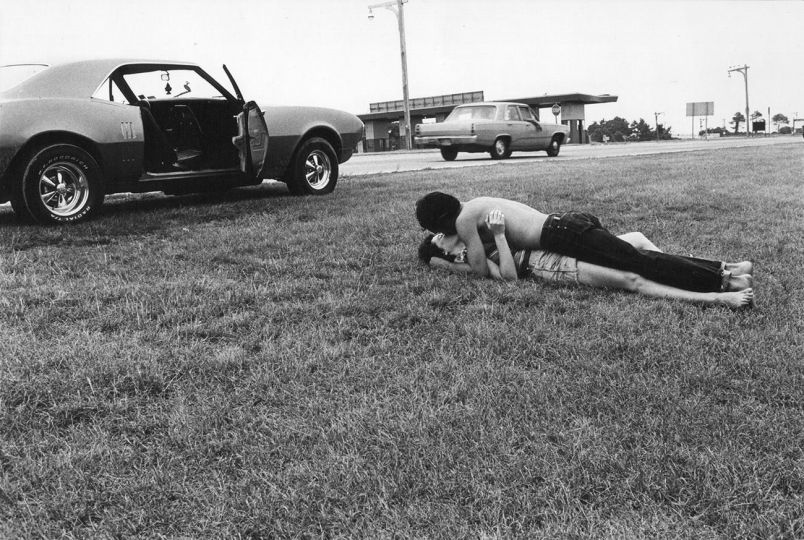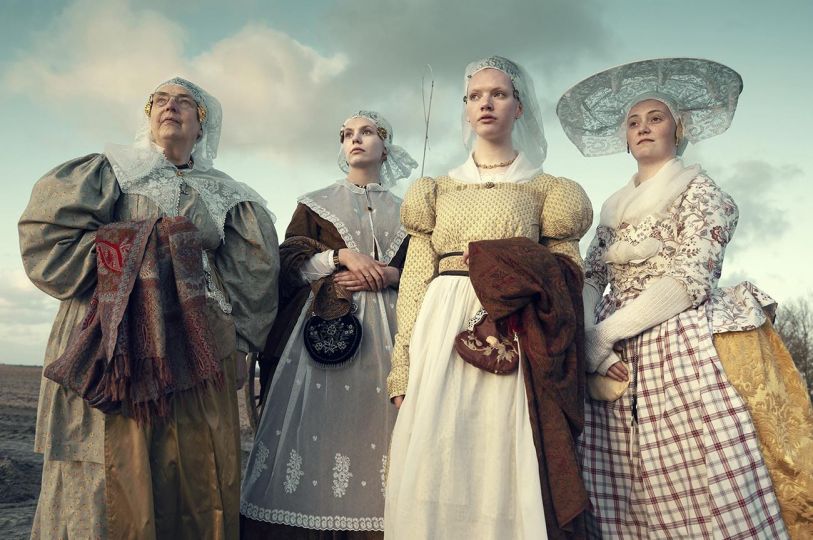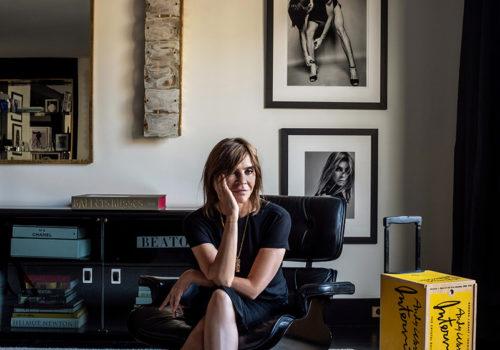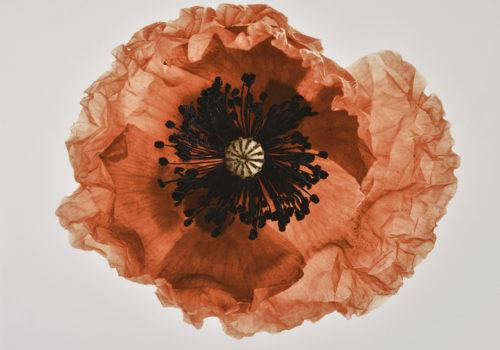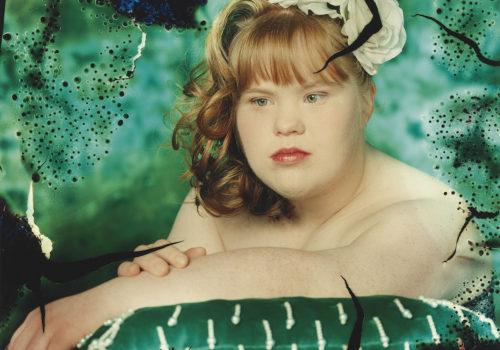The two German artists, Alexander Rosenkranz and Florian Merdes, present a multimedia exploration of Tempelhofer Feld, the largest public space in the world. Located in the heart of Berlin, this former airport, built under the Nazi regime and later becoming a symbol of liberation, has since been transformed into an urban park. The photographers made this the subject of their artistic interpretation through tilted horizons and textures, creating unconventional visions. An encounter.
Can you tell me more about your individual artistic practices and how they complement each other in this collaboration?
Alexander: We met at art school in Leipzig and shared a studio. Our first collaboration was an exhibition that consisted of an empty room where we placed a photocopier three days before the exhibition opened. We then developed the exhibition on-site from these two elements. The room had a large display window, just like the photocopier has a glass surface. We covered this shop window with lots of things and thus filled the glass surface. We then printed a photograph of this installation on a 1:1 scale using the photocopier and wallpapered it on the wall opposite the shop window. In retrospect, I think it was a very nice precursor project to Tempelhofer Feld.
My own artistic work usually has a photo-documentary origin, which is expanded or completely abandoned in various ways during the process. I am interested in how meaning is constituted and how the eye is merely a lens, while the rest is directed by the mind. As a result, everything we see becomes fragile. For me, this is the strength of photography. It helps me as a tool to understand this human and cultural mechanism. I think this is where Florian’s and my work overlap the most, don’t you?
Florian: Yes, that’s right. My work revolves around the question of how things appear in and as images, rather than what they actually are. I take great pleasure in detaching photography from one context or another and using it to examine the perception of images in the broadest sense: not only the perception of the photographic image space itself but also the world of imagination and imagery that determines our reality. For me, this approach harbors great potential for using photography constructively and creating new possibilities, spaces, and visual worlds from what is already there.
How did your collaboration on the Tempelhofer Feld project come about? What drew you both to this unique space in Berlin?
Alexander: We both met at a point in our lives when we were lacking artistic exchange. Florian had published his project Steamcracker as a book at Fotohof in Salzburg, and I had realized my work Gibellina Model Studies for Images Vevey as a book and exhibition. We wanted to collaborate on something together. We were interested in Tempelhofer Feld for several reasons. First of all, it is predestined for collaborations, which corresponds to the nature of Tempelhofer Feld. Thousands of people share the former airport site in the center of Berlin every day and create momentum. On the other hand, we were drawn to the challenge of photographing a place characterized above all by the absence of everything that makes up a city—right in the center of the city. How do you photograph an empty, vast space? Despite its uniqueness, this aspect did not seem to have been photographed before.
Florian: We thought there was a lot of documentation and photographic work on this place, but no work that dealt with the empty space and the freedom that comes with it. Together, we ventured into the project with all the restrictions we had imposed on ourselves. It was very important to us to leave out many aspects that characterize Tempelhofer Feld in order to arrive at an essence and a visual translation of the individual experience of this place. Therefore, we were less interested in people as individuals, the peripheral buildings, and the undoubtedly beautiful community projects on the field. We also wanted to completely exclude historical or architectural themes from the very beginning. We were much more focused on capturing the spatial characteristics of this place and how it affects you in the context of the city when you confront its emptiness. Looking back, we couldn’t have done this alone; it was a task for both of us.
Alexander: In moments when we didn’t know what to photograph, we talked, and eventually, we took a new image.
Tempelhofer Feld is a vast, unbuilt landscape in the middle of Berlin. What makes this space so special to you, and how do your works express its distinctiveness both concretely and metaphorically?
Florian: For us, what makes Tempelhofer Feld so special is the emptiness that is most evident between the two runways. There’s the wide sky, the distant horizon of the city, and the feeling of having a landscape experience in the middle of a global metropolis—something you can’t find in any other city center. The contrast of the spaces and the reverberation of the field when re-entering the urban environment really stand out.
Alexander: What makes it special for us is the physical experience of the field. The immediate proximity of the field to the densely built urban space creates a sudden transition, making it particularly perceptible. Nowhere else in Berlin is there so much sky or so much horizon to see. Apart from the former airport architecture, there are no predefined paths, no signage, and no distractions—not even street lighting. It is pure space. This represents a dimension of freedom for which Berlin was once famous but which has become practically non-existent in urban spaces today. However, this level of freedom can also be overwhelming.
In our photographic approach, we initially focused on the three-part composition of the landscape: surface, sky, and horizon. By photographing this constellation without adhering to traditional concepts of « top » and « bottom, » we aimed to liberate ourselves from the conventions of landscape representation. This genre is often perceived as historical, dry, and somewhat dull, which made it appealing to us. This part of the work can be seen in the first room of the exhibition. The shape of the room reminded us of a runway, and the images—presented in formats based on the size of airplane windows—develop a formal tilt that matches the photography. Viewed from a distance, the pictures resemble graphic compositions, similar to analog test strips from the darkroom. As you approach a picture, you gradually notice the many visible details and gain a sense of the vastness. The result is a dynamic interplay between the scale of the landscape and your own view of it.
The second room in the exhibition initially appears empty. A table installation invites you to take a closer look. On it are three individual, photo book-like stacks—permanent objects made of laser prints that can be flipped through. It is unclear whether there is a beginning or an end. Each double page shows different facets of the field. The deliberately overwhelming number of images makes it difficult for the viewer to grasp the entirety of the work.
In the third and final room, there is a 20-minute, two-channel projection accompanied by a field recording. The impression of a flood of images transforms into an immersive experience of the field, primarily intended to evoke a sense of inner calm and encourage reflection. Large projected color images depict the cycle of a year during which we photographed the field.
Florian: Despite the large number of pictures displayed across the three rooms, we are only showing a very small section of our entire collection in the exhibition. We are not interested in creating a definitive or fixed image of the place. That wouldn’t do justice to it. Rather, the exhibition should serve as an invitation for viewers to engage with the images of the place themselves and find their own personal approach to it. The field can be many things and can be experienced in countless ways. Ultimately, however, it is defined by the individual who perceives it. We wanted to emphasize this aspect in our exhibition.
Your work on Tempelhofer Feld evokes sensations of freedom and immensity, but the site also raises questions about urban development in a city facing a housing crisis. What thoughts or reflections does this tension between openness and urban pressure inspire in your work?
Florian: Maybe there is no pressure to build on the field. Who would live on the field? Who would the development be for? Who would benefit from it? Certainly not the people who voted in favor of preserving the field in the referendum. It is absolutely essential for urban development to preserve the field—to endure and appreciate an undesigned space and make its potential accessible to the population. A development would help a few, but the field alone cannot correct the mistakes of Berlin’s housing policy.
Rather, the field questions other spaces: spaces in the extended center of Berlin that are not created for the needs of the population at all. They are subject to purely economic logics and do not promote any quality of life or quality of stay. These spaces could also be called into question. The position from which the criticism of the « empty field » comes is an economic one. In my opinion, it does not represent the interests of many Berliners.
If you look at the history of Tempelhofer Feld, it also seems absurd to overwrite such an important and historic place for society with a neighborhood for a few.
The photographs offer new perspectives on Tempelhofer Feld, with tilting horizons and experimental framing. How do perspective and framing challenge conventional views of urban spaces?
Florian: The shifts in perception that result from experiments and apperceptive influences help to set new focal points in terms of content. The emptiness in the middle of Tempelhofer Feld could perhaps be « shown » in a few classic landscape photographs. But our pictures document much more of our working process on the field. You have to be there for a few days to roll around on the ground, photograph weeds and the runway, turning round and round in circles, and give up the focused image. By doing this mindlessly over and over again, you finally begin to realize the abundance that is there.
Your approach also emphasizes the sensory experience of Tempelhofer Feld through details, textures, and colors. Can you elaborate on how you captured the sensory essence of this space?
Florian: Above all, by visiting and photographing this place repeatedly. The work on Tempelhofer Feld was a process. As a result, we gradually developed our own photographic language for this place—a language that we both formed and found together, which was a very nice experience for us. We were fascinated by what you can find in the void—which, of course, is not a void at all but rather an abundance of freedom.
Tempelhofer Feld at Haus Am Kleistpark until 27 October 2024.
Haus Am Kleistpark
Grunewaldstraße 6-7,
10823 Berlin
https://www.hausamkleistpark.de

